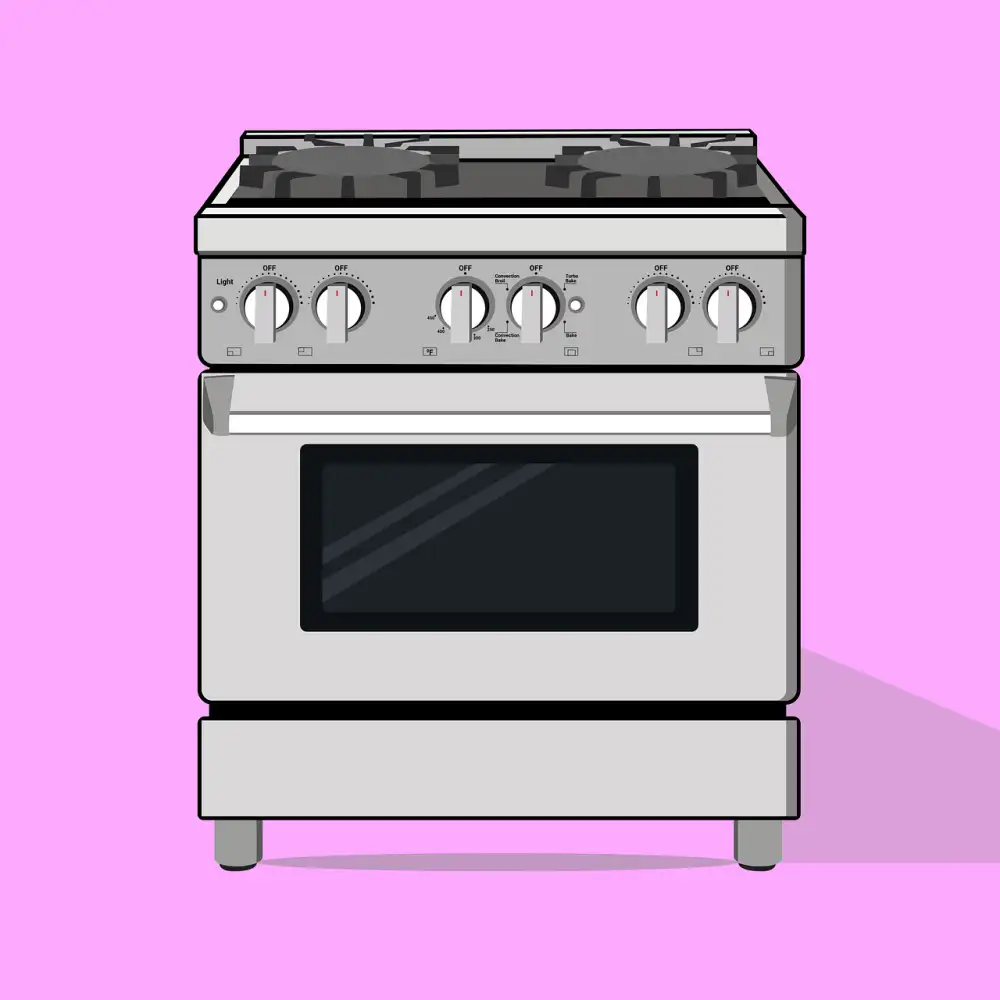Master the Art of Cooking with a Convection Oven: Your Ultimate Guide to Operating a Convection Oven at Home

- Understanding the Basics of Convection Cooking
- Preparing Your Convection Oven for Use
- Adjusting Cooking Times and Temperatures
- Utilizing the Convection Setting for Baking
- Maximizing Efficiency with Multiple Racks
- Tips for Properly Roasting and Broiling
- Cleaning and Maintaining Your Convection Oven
- Safety Precautions and Final Thoughts
Convection ovens have revolutionized the way we cook, offering faster and more efficient results compared to traditional ovens. These appliances use a fan and exhaust system to circulate hot air evenly around the food, resulting in quicker cooking times and even browning.
The concept of convection cooking is based on the principle that hot air rises. As the fan blows hot air around the food, it creates a convection current that speeds up cooking and ensures that heat is distributed evenly. This means you can achieve perfectly cooked dishes with less time and effort.
Convection ovens are versatile and can be used for various cooking methods, including baking, roasting, broiling, and even dehydrating. Whether you're a seasoned chef or just starting out in the kitchen, mastering the art of cooking with a convection oven will open up a world of culinary possibilities. So let's dive in and explore how to make the most of this incredible appliance!
Understanding the Basics of Convection Cooking
Convection cooking is a method that utilizes a fan to circulate hot air evenly throughout the oven. This constant circulation of hot air results in faster and more even cooking. The fan helps to distribute heat more efficiently, reducing cooking times by up to 25%.
The circulating air also ensures that food cooks more evenly, eliminating hot spots and ensuring consistent browning and crispness. This makes convection ovens ideal for baking delicate pastries, roasting meats, and achieving perfectly golden crusts on casseroles.
It's important to note that convection cooking requires lower temperatures than traditional cooking methods. The fan helps to distribute heat evenly, allowing you to reduce the temperature by about 25 degrees Fahrenheit compared to conventional ovens. This means you can cook your favorite recipes faster while still achieving delicious results.
Convection cooking is also great for reheating leftovers as it helps prevent them from becoming soggy or overcooked. The circulating hot air quickly heats the food without drying it out, resulting in a crispy exterior and moist interior.
By understanding the basics of convection cooking, you can take full advantage of your convection oven's capabilities and create culinary masterpieces with ease.
Preparing Your Convection Oven for Use
Before you start using your convection oven, it is important to ensure that it is properly prepared. Begin by removing any packaging materials or protective films from the oven's interior and racks. Next, wipe down the interior with a damp cloth to remove any dust or residue.
Once the interior is clean, preheat the oven to a high temperature, such as 450°F (232°C), for about 15 minutes. This will help burn off any remaining manufacturing oils or odors.
During this initial preheating process, you may notice some smoke or a slight odor. This is normal and should dissipate after a few minutes. Open windows or turn on ventilation if necessary.
After preheating, allow the oven to cool completely before proceeding with your cooking. This ensures that the oven is at its optimal temperature for even cooking.
It is also important to check that the convection fan is working properly. When you turn on the convection setting, you should feel a gentle breeze coming from the vents in the back of the oven.
By following these simple steps to prepare your convection oven for use, you can ensure that it operates efficiently and provides consistent results in all your culinary endeavors.
Adjusting Cooking Times and Temperatures
One of the key benefits of using a convection oven is its ability to cook food faster than traditional ovens. This is due to the circulation of hot air, which helps to distribute heat evenly throughout the oven cavity. As a result, you may need to adjust your cooking times and temperatures when using a convection oven.
In general, when using a convection oven, you can reduce the cooking time by about 25% compared to a conventional oven. This means that if a recipe calls for baking at 350°F (175°C) for 30 minutes in a regular oven, you can bake it at 350°F (175°C) for approximately 22-23 minutes in a convection oven.
Similarly, you may need to lower the temperature by about 25 degrees Fahrenheit (15 degrees Celsius) when using the convection setting. For instance, if a recipe instructs you to bake at 375°F (190°C) in a regular oven, you should set your convection oven to around 350°F (175°C).
It's important to note that these are general guidelines and may vary depending on your specific convection oven model. It's always recommended to consult your appliance's user manual for precise instructions on adjusting cooking times and temperatures.
By making these adjustments, you can ensure that your dishes are cooked perfectly in your convection oven. Experiment with different recipes and keep track of the changes you make so that you can fine-tune your cooking techniques over time.
Utilizing the Convection Setting for Baking
One of the greatest advantages of a convection oven is its ability to evenly bake and brown your favorite baked goods. When using the convection setting for baking, it's important to make a few adjustments to ensure optimal results.
Firstly, preheating your convection oven is crucial. Set the oven to the desired temperature and allow it to preheat fully before placing your baking dish inside. This ensures that the hot air circulates properly from the beginning, resulting in even baking.
Next, consider using lower temperatures when baking with convection. The circulating hot air in a convection oven cooks food faster than traditional ovens. As a general rule, reduce the recommended temperature by 25 degrees Fahrenheit or about 15 degrees Celsius.
To prevent over-browning or uneven cooking, it's advisable to use light-colored baking pans or reduce cooking time slightly. The increased airflow in a convection oven can cause browning to occur more quickly.
Furthermore, rotating your baking pans halfway through the cooking process helps promote even browning and ensures that all sides of your baked goods are cooked uniformly.
Lastly, keep an eye on your baked goods during the cooking process as they may cook faster than expected. Use a toothpick or skewer to test for doneness by inserting it into the center of cakes or bread. If it comes out clean or with just a few crumbs attached, your baked goods are ready to be removed from the oven.
By utilizing these tips and adjusting your baking techniques accordingly, you can take full advantage of the convection setting in your oven and achieve perfectly baked treats every time.
Maximizing Efficiency with Multiple Racks
One of the advantages of using a convection oven is its ability to cook multiple dishes simultaneously, thanks to the presence of multiple racks. This feature allows you to save time and energy by cooking more food at once.
To maximize efficiency, it's important to arrange your dishes strategically on the racks. Place larger items that require longer cooking times on the lower racks, as heat rises in a convection oven. This ensures that these items receive consistent heat throughout the cooking process.
Smaller items or dishes that require less cooking time should be placed on the higher racks. This prevents them from overcooking or burning due to their proximity to the heating element.
When arranging your dishes, make sure there is enough space between them for proper air circulation. This allows hot air to circulate evenly around each dish, ensuring even cooking and browning.
If you're unsure about how many dishes can be cooked at once, consult your oven's user manual for guidelines on rack placement and recommended maximum load capacity.
By utilizing multiple racks effectively, you can make the most out of your convection oven's capacity and save both time and energy in the kitchen.
Tips for Properly Roasting and Broiling
1. Use the Right Cookware: When roasting or broiling in a convection oven, it is important to use shallow, open pans. This allows the hot air to circulate evenly around the food, ensuring even cooking and browning.
2. Preheat the Oven: Always preheat your convection oven before roasting or broiling. This ensures that the oven reaches the desired temperature before you start cooking, resulting in better browning and more consistent results.
3. Use a Meat Thermometer: To ensure that your meat is cooked to perfection, use a meat thermometer to check its internal temperature. This will help you avoid undercooking or overcooking your meat.
4. Adjust Cooking Times: When using a convection oven for roasting or broiling, it is important to adjust the cooking times accordingly. Convection ovens cook faster than conventional ovens, so reduce the cooking time by about 25% and keep an eye on your food as it cooks.
5. Position Food Correctly: For even browning and cooking, make sure to position your food properly in the oven. Place larger cuts of meat on a rack in a shallow pan so that hot air can circulate around them evenly.
6. Utilize the Broil Setting: When broiling in a convection oven, use the broil setting for quick and intense heat. Keep a close eye on your food as it can easily burn under high heat.
7. Let It Rest: After roasting or broiling, allow your food to rest for a few minutes before serving. This allows the juices to redistribute throughout the meat, resulting in juicier and more flavorful dishes.
By following these tips, you can master the art of roasting and broiling with your convection oven, creating delicious meals with perfectly cooked meats and beautifully browned exteriors.
Cleaning and Maintaining Your Convection Oven
Cleaning and maintaining your convection oven is essential for its longevity and optimal performance. After each use, allow the oven to cool down before cleaning. Start by removing any food debris or spills from the interior using a damp cloth or sponge. For stubborn stains, a mixture of baking soda and water can be effective. Gently scrub the stained area and rinse thoroughly.
To clean the oven racks, remove them and soak them in warm soapy water for a few hours. Use a soft brush or sponge to remove any remaining residue, then rinse and dry them completely before placing them back into the oven.
The exterior of the convection oven can be wiped down with a mild detergent and water solution. Avoid using abrasive cleaners or harsh chemicals as they may damage the surface.
Regular maintenance includes checking the door seal for any signs of wear or damage. A faulty seal can lead to heat loss and inefficient cooking. If necessary, replace the seal following the manufacturer's instructions.
It's also important to keep the convection oven's ventilation system clean. Check for any blockages in the vents and remove any accumulated dust or debris using a vacuum cleaner or a soft brush.
Lastly, schedule professional maintenance at least once a year to ensure that all components are working properly. A qualified technician can inspect and service your convection oven to prevent potential issues.
By following these cleaning and maintenance practices, you can prolong the lifespan of your convection oven while ensuring safe and efficient cooking experiences for years to come.
Safety Precautions and Final Thoughts
When using a convection oven, it is important to prioritize safety. Always read the manufacturer's instructions and follow them carefully. Here are some essential safety precautions to keep in mind:
1. Use oven mitts or heat-resistant gloves when handling hot dishes or trays.
2. Be cautious of the hot air circulating inside the oven while cooking.
3. Keep flammable materials away from the oven to prevent accidents.
4. Avoid overcrowding the oven with too many dishes, as this can hinder proper airflow.
5. Regularly clean the oven to prevent grease buildup, which can lead to fires.
6. Do not use aluminum foil or any other material that may block airflow inside the oven.
7. Never leave the convection oven unattended while in use.
In conclusion, mastering the art of cooking with a convection oven opens up a world of culinary possibilities. By understanding its basics, adjusting cooking times and temperatures accordingly, utilizing different settings for baking, maximizing efficiency with multiple racks, and following safety precautions, you can unleash your creativity in the kitchen and elevate your cooking skills to new heights. Enjoy exploring the endless possibilities that a convection oven offers!
Published: 24. 02. 2024
Category: Home



